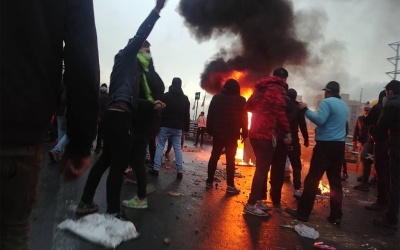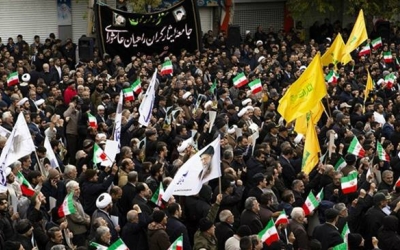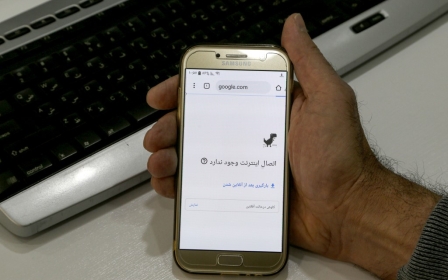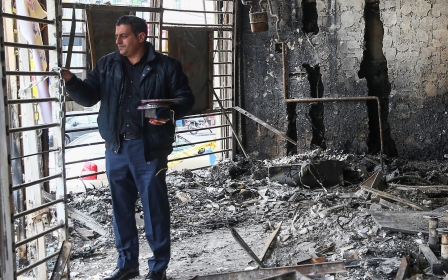Crackdown on Iranian protests killed 1,500, says report
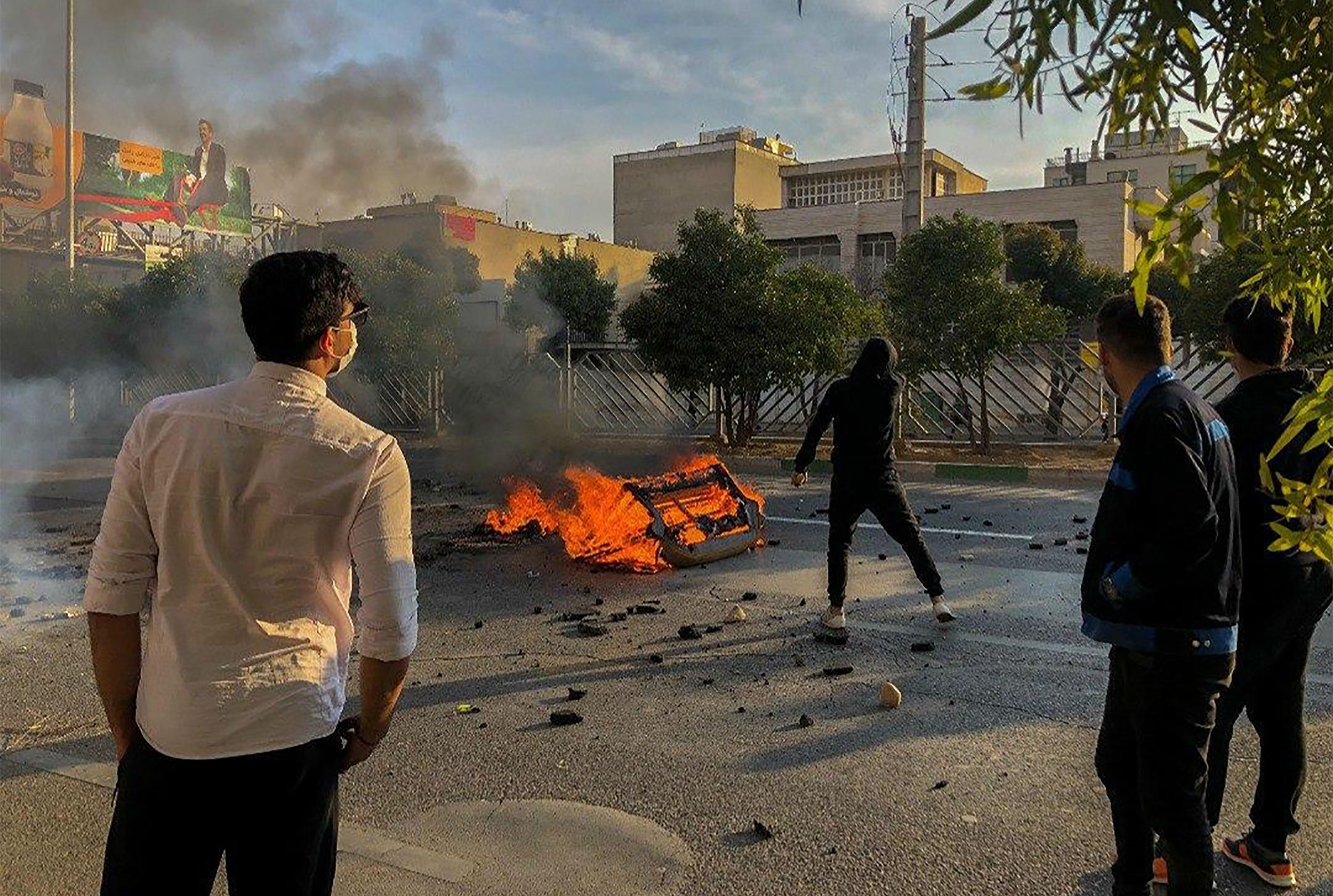
Iranian forces killed around 1,500 people as they cracked down on recent nationwide protests, according to a Reuters report.
The death toll that was provided to the news agency by three anonymous Iranian interior ministry officials included at least 17 teenagers and about 400 women.
This new figure is much higher than what has been reported previously by rights groups on the violence that started on 15 November. A report released earlier this month by Amnesty International put the death toll nearer to 300.
The officials said the figure was based on information gathered from security forces, morgues, hospitals and coroner’s offices.
Iran has given no official death toll and has rejected figures as “speculative”.
New MEE newsletter: Jerusalem Dispatch
Sign up to get the latest insights and analysis on Israel-Palestine, alongside Turkey Unpacked and other MEE newsletters
The report also quoted Iranians with close links to Supreme Leader Ayatollah Ali Khamenei saying he had ordered security officials to “do whatever it takes to stop” the protests that had taken over the country for days.
Iranians took to the streets at first in scattered protests over a surprise hike in petrol prices, but very quickly the unrest reached Tehran and people were calling for a change in government.
Protesters burned pictures of Khamenei and some called for the return of Reza Pahlavi, the exiled son of the toppled shah of Iran, Reuters reported.
Khamenei, who has the final say over all state matters, reportedly called for a meeting at his residence on 17 November to counter the situation. It was attended by senior officials including security aides, President Hassan Rouhani and members of his cabinet.
Sources from his inner circle who described the meeting said Khamenei “raised his voice and expressed criticism of the handling of the unrest”.
“The Islamic Republic is in danger. Do whatever it takes to end it. You have my order,” the supreme leader is quoted to have said.
Khamenei said he would hold the assembled officials responsible for the consequences of the protests if they didn’t immediately stop them.
Another official, who was briefed on the meeting, added that Khamenei made clear the demonstrations required a forceful response.
“Our Imam,” said the official, referring to Khamenei, “only answers to God. He cares about people and the Revolution. He was very firm and said those rioters should be crushed.”
'Our Imam only answers to God. He cares about people and the Revolution. He was very firm and said those rioters should be crushed'
- Iranian official
The government maintained that the unrest was a direct result of the country’s enemies - namely the United States, Israel and Saudi Arabia - fuelling the protests.
Khamenei has described the situation as the work of a “very dangerous conspiracy”.
“The aim of our enemies was to endanger the existence of the Islamic Republic by igniting riots in Iran,” said the commander-in-chief of the elite Revolutionary Guards Corps, Hossein Salami, last month.
The protests began after state media announced on 15 November that petrol prices would increase by as much as 200 percent, and reached more than 100 cities and towns. Young and working-class demonstrators demanded that clerical leaders step down.
Riot police appeared to be randomly shooting at protesters in the streets of Tehran “with the smell of gunfire and smoke everywhere”, said a female Tehran resident Reuters reached by telephone.
People were falling down and shouting, she added, while others sought refuge in houses and shops.
Iranian authorities resorted to lethal force much quicker than in other protests in recent years, according to activists and details revealed by authorities.
The interior minister said on 27 November that more than 140 government sites, hundreds of banks and dozens of petrol stations had been set ablaze by rioters, according to state news agency IRNA.
The minister said up to 200,000 people took part in the unrest nationwide.
A senior member of the Revolutionary Guard in western Kermanshah province said the provincial governor handed down instructions at a late-night emergency meeting at his office on 18 November.
“We had orders from top officials in Tehran to end the protests," the Guard member said, recounting the governor’s talk. “No more mercy. They are aiming to topple the Islamic Republic. But we will eradicate them,” the official is quoted as saying in the report.
The three sources revealed to Reuters that Khamenei was especially concerned with the discontentment in small working-class towns, whose lower-income voters have strongly supported the country's rulers.
Squeezed by sanctions, Khamenei has few resources to tackle high inflation and unemployment.
Officials across the country said the message was clear - failure to stamp out the unrest would encourage people to protest in the future.
A local official in Karaj, a working-class city near the capital, said there were orders to use whatever force was necessary to end the protests immediately.
“Orders came from Tehran,” he said, speaking on condition of anonymity to Reuters. “Push them back to their homes, even by shooting them.”
Residents of Karaj said they came under fire from rooftops as Revolutionary Guard and police on motorcycles brandished machine guns.
“There was blood everywhere. Blood on the streets,” said one resident by telephone. Reuters could not independently verify that account.
In Mahshahr county, in the strategically important Khuzestan province in southwest Iran, Revolutionary Guard in armoured vehicles and tanks sought to contain the demonstrations.
State TV said security forces opened fire on “rioters” hiding in the marshes. Officials said they were a security threat to petrochemical complexes and to a key energy route that, if blocked, would have created a crisis in the country.
Rights groups said they believe Mahshahr had one of the highest protest death tolls in the country, based on local reports.
“The next day when we went there, the area was full of bodies of protesters, mainly young people. The Guard did not let us take the bodies,” the local official said, estimating that “dozens” were killed.
Middle East Eye delivers independent and unrivalled coverage and analysis of the Middle East, North Africa and beyond. To learn more about republishing this content and the associated fees, please fill out this form. More about MEE can be found here.


